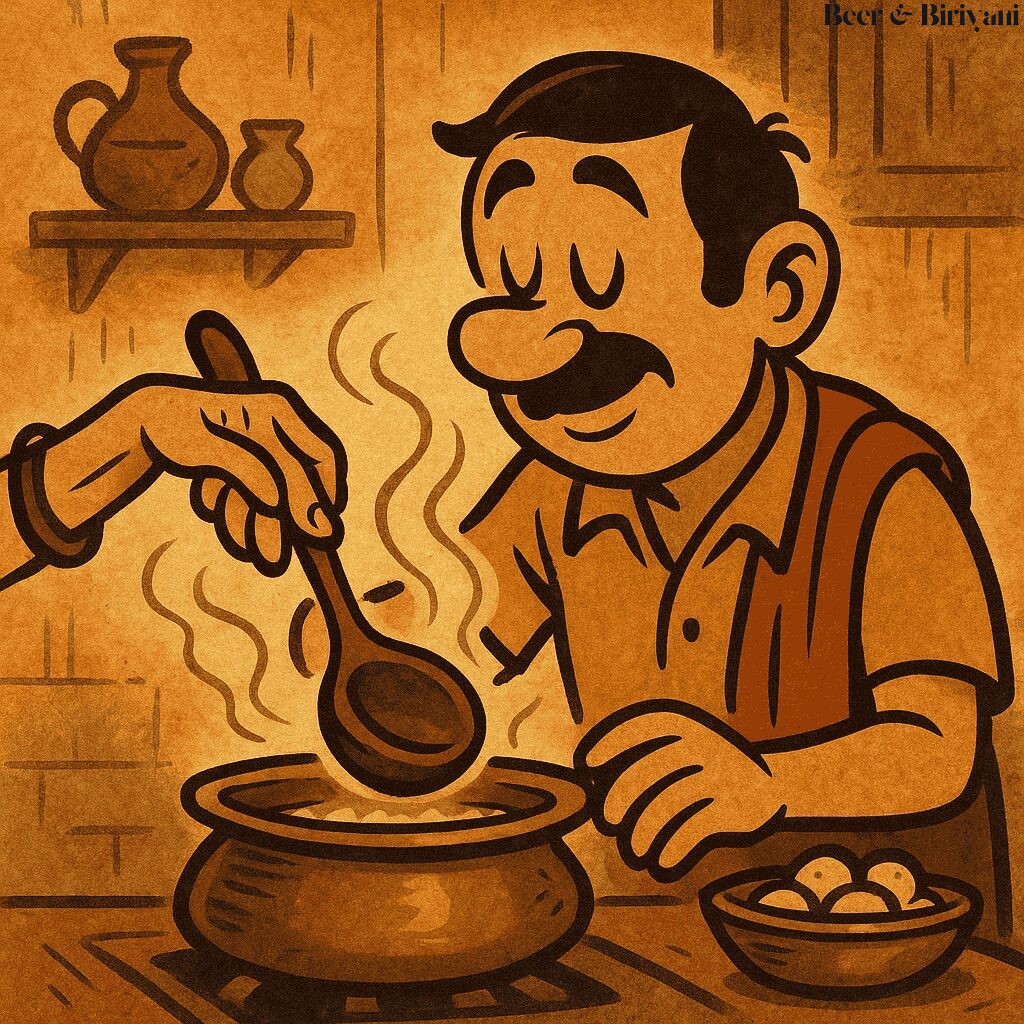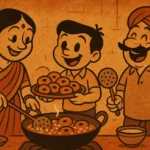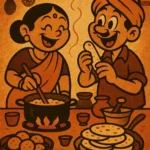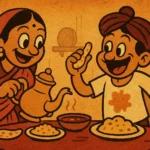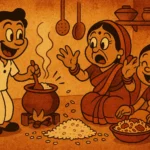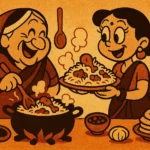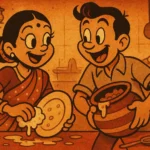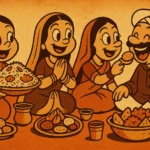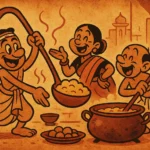There are kitchen tools you buy, and there are kitchen tools that become family. My grandmother’s ladle was the latter. It wasn’t fancy. Just an old wooden one, dark from age, slightly chipped at the handle, and always faintly smelling of turmeric no matter how often it was washed. But in our house, that ladle didn’t just stir. It seasoned. Somehow, everything that passed through it came out tasting like her.
She called it “karchi,” with the kind of reverence most people reserve for God or Lata Mangeshkar. When guests came over, she’d often say, “Dal is good today. I used my old karchi.” As if it were the ladle doing the magic, not her thirty years of practice and stubborn refusal to measure anything.
Wood Soaked in Memory
That ladle had a life. It had stirred thousands of pots—dal, sabzi, halwa, kadhi. It had been singed at the edge from too-close encounters with gas flames. Its grainy surface had absorbed everything from ghee to red chili oil. And over time, it seemed to develop a quiet authority in the kitchen. If my grandmother ever caught me reaching for a steel spoon while she was cooking, she’d give me a look. “Use the karchi,” she’d say. “It knows the dish.”
And maybe it did. Because when I tried making the same Rajasthani-style kadhi with a new silicon spatula in my Austin kitchen, something tasted off. Technically, it was correct. But emotionally? It was missing that soft depth, that smoky tang only age—and maybe ancestral wood—could deliver.
More Than a Tool
We often talk about recipes as legacy. But sometimes, the things that carry memory aren’t written down at all. Sometimes they’re just the tools we use, over and over again, until they become extensions of us. That ladle didn’t just mix ingredients. It held history. It remembered every time she tapped it against the side of the pot. Every time she used it to shoo a fly off the countertop. Every time she placed it gently across the rim so it wouldn’t sink into the dal like an amateur.
She had rules for it. No soap—just hot water and a scrub with rukha kapda. Never soak it overnight. And absolutely no using it for non-veg. “It has a vegetarian soul,” she’d joke. But you could tell she meant it. That ladle had boundaries. Preferences. Maybe even a moral compass.
Cooking Without It
After she passed, the ladle stayed in the drawer for a while. My mother kept it, but she rarely used it. Said it didn’t feel right. And when I eventually moved to the U.S., it didn’t make it into my suitcase. Too long, too heavy, too old, I told myself. But really, I think I didn’t take it because I didn’t know if I could be trusted with it.
These days, I cook with a slick, heat-resistant spoon from some big-box store. It works. But it has no history. It doesn’t argue back. It doesn’t quietly influence the flavor. It’s just a spoon. Functional. Forgettable. I find myself cooking more by instinct now, but I still miss the certainty of that wooden curve gliding across the bottom of a pot, collecting just enough, never too much.
The Tools We Inherit
In many Indian kitchens, tools outlive generations. Brass patilas, cast iron tawas, wooden chaklas. They’re not just functional—they’re companions. You inherit them the way you inherit stories: half-worn, slightly mysterious, and entirely irreplaceable.
I’ve seen ladles carved from neem wood, spoons made from coconut shells, and humble metal chamchas bent from years of service. Each one changes the way food is handled. Each one adds something—be it taste, texture, or just confidence. Because cooking isn’t just chemistry. It’s conversation. And some tools? They know how to talk back.
Letting It Live Again
On a recent visit to Mumbai, I finally asked my mother if I could bring the ladle back with me. She hesitated. Then nodded. “But wrap it properly,” she said, “don’t let it snap in your suitcase.” I wrapped it in an old dupatta. Carried it in my hand luggage like something fragile and sacred.
Back home in Austin, I made dal that week. I used the old karchi. Stirred it slow. Let the tempering bloom just like she did. And I swear—just for a moment—it tasted like her.
Not exactly. Not perfectly. But close enough to remind me that some flavors don’t come from spices. They come from time. From hands. From tools soaked in memory. And if we’re lucky, we get to keep stirring with them long after the person is gone.
Born in Mumbai, now stir-frying feelings in Texas. Writes about food, memory, and the messy magic in between — mostly to stay hungry, sometimes just to stay sane.

